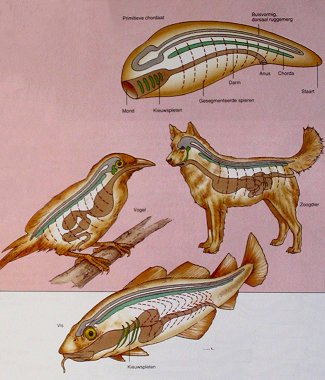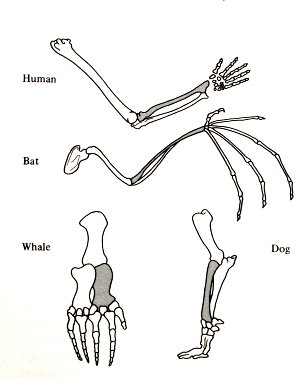
After Whitfield: De evolutie van het leven
(1994)

After Minkoff: Evolutionary Biology (1984)
Characteristics: a hollow spinal cord, a spinal column (or a flexible rod or notochord), a mouth, an alimentary tract, an anus and gill spleten. All these traits are still present in the living vertebrates, though some only in the embryotic phase (the human embryo has still gill clefts).
It is interesting that the similar structure in earlier centuries has been explained as a proof for the existence of creation, whereas Darwin reversed the case by putting that it is proof for common ancestry. If one species descends from another, it is very probable (or perhaps unavoidable) that the basic structure does not change. The differences between the forelimbs are due to adaptations to the different ways in which they are used.